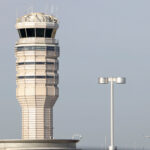The Occupational Safety and Health Administration today issued a guide for small construction firms on how to comply with safety rules involving cranes and derricks.
OSHA published a rule in August 2010 to address the number of worker injuries and deaths associated with the use of cranes and derricks in construction. The rule also addresses technological advances in equipment since the old rule was issued in 1971.
“Over the past four decades, we’ve continued to see a significant number of worker injuries and deaths from electrocution, crushed-by and struck-by hazards while performing cranes and derricks operations,” said Assistant Secretary of Labor for Occupational Safety and Health Dr. David Michaels. “This guide will help employers understand what they must do to protect their workers from these dangerous, sometimes fatal incidents.”
Significant requirements in this new rule include: a pre-erection inspection of tower crane parts; use of synthetic slings in accordance with the manufacturer’s instructions during assembly/disassembly work; assessment of ground conditions; qualification or certification of crane operators; and procedures for working in the vicinity of power lines.
The rule requires operators of most types of cranes to be qualified or certified. Employers have up to four years to ensure that their operators are qualified or certified, unless they are operating in a state or city that has operator requirements.
The small business guide is divided into chapters that correspond to sections of the standard. This guide accompanies other OSHA compliance materials on crane-related topics available on the agency’s Web site including a PowerPoint overview, Web chat transcript, Webinar, list of frequently asked questions, and fact sheets.
Was this article valuable?
Here are more articles you may enjoy.

 Deutsche Bank, Mudrick Sue Ambac Over $65 Million Transfer
Deutsche Bank, Mudrick Sue Ambac Over $65 Million Transfer  Trump’s Tariffs Threaten to Endanger the Cheap American Car
Trump’s Tariffs Threaten to Endanger the Cheap American Car  FAA Must Do Better After Midair Collision, Acting Chief Says
FAA Must Do Better After Midair Collision, Acting Chief Says  An Unusually Active Hurricane Season Is in Store for the Atlantic
An Unusually Active Hurricane Season Is in Store for the Atlantic 